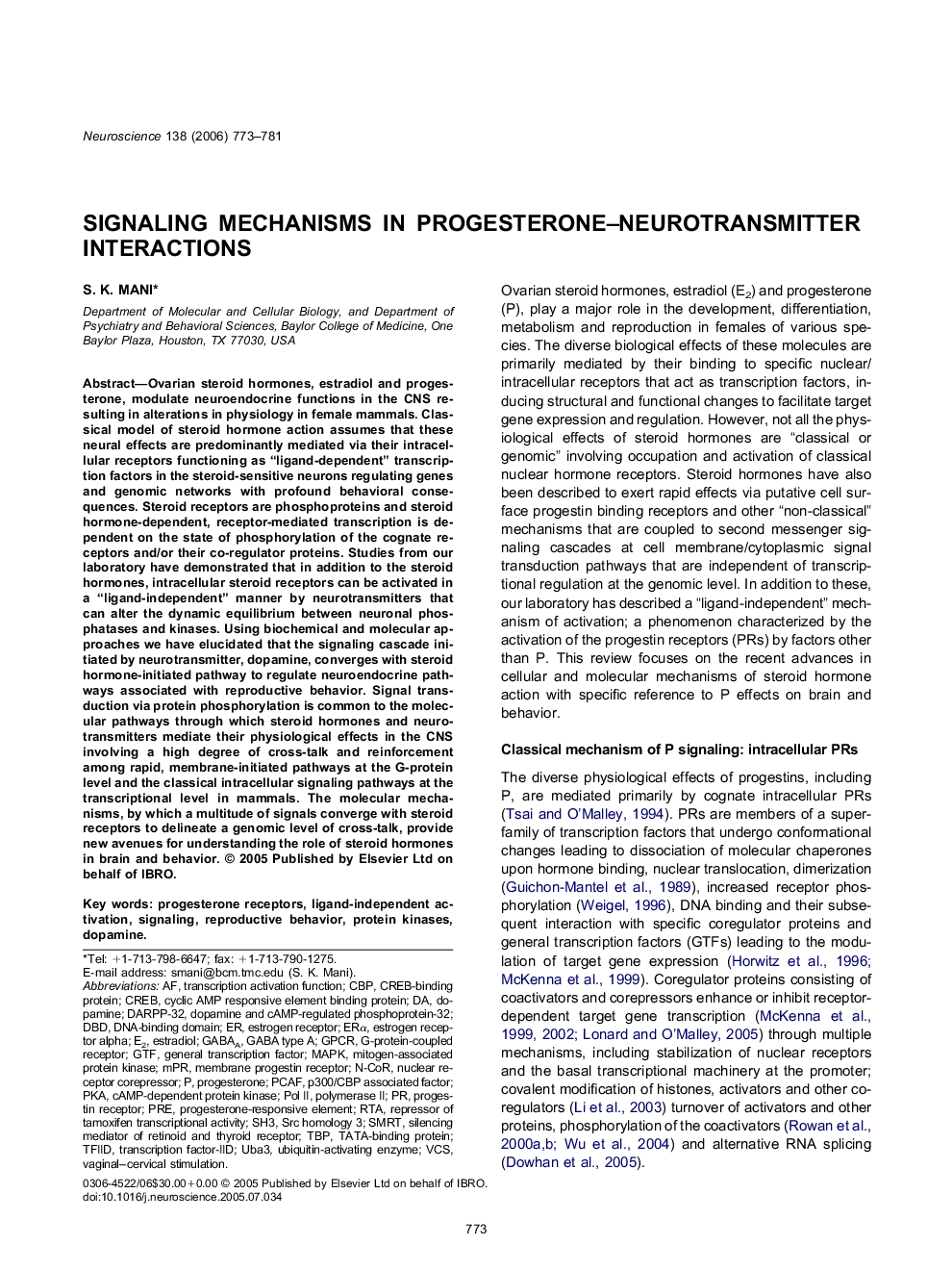| Article ID | Journal | Published Year | Pages | File Type |
|---|---|---|---|---|
| 4342043 | Neuroscience | 2006 | 9 Pages |
Abstract
Ovarian steroid hormones, estradiol and progesterone, modulate neuroendocrine functions in the CNS resulting in alterations in physiology in female mammals. Classical model of steroid hormone action assumes that these neural effects are predominantly mediated via their intracellular receptors functioning as “ligand-dependent” transcription factors in the steroid-sensitive neurons regulating genes and genomic networks with profound behavioral consequences. Steroid receptors are phosphoproteins and steroid hormone-dependent, receptor-mediated transcription is dependent on the state of phosphorylation of the cognate receptors and/or their co-regulator proteins. Studies from our laboratory have demonstrated that in addition to the steroid hormones, intracellular steroid receptors can be activated in a “ligand-independent” manner by neurotransmitters that can alter the dynamic equilibrium between neuronal phosphatases and kinases. Using biochemical and molecular approaches we have elucidated that the signaling cascade initiated by neurotransmitter, dopamine, converges with steroid hormone-initiated pathway to regulate neuroendocrine pathways associated with reproductive behavior. Signal transduction via protein phosphorylation is common to the molecular pathways through which steroid hormones and neurotransmitters mediate their physiological effects in the CNS involving a high degree of cross-talk and reinforcement among rapid, membrane-initiated pathways at the G-protein level and the classical intracellular signaling pathways at the transcriptional level in mammals. The molecular mechanisms, by which a multitude of signals converge with steroid receptors to delineate a genomic level of cross-talk, provide new avenues for understanding the role of steroid hormones in brain and behavior.
Keywords
CREBp300/CBP associated factorTFIIDLigand-independent activationSMRTVCSSH3PCAFRtaGTFERαCBPMPRGPCRDARPP-32pKaDBDTBPG-protein-coupled receptorMAPKN-CoRUbiquitin-activating enzymeEstradiolDNA-Binding DomainDopaminereproductive behaviorSignalinggeneral transcription factorprenuclear receptor corepressorSrc homology 3CREB-binding proteincyclic AMP responsive element binding proteinTATA-binding proteinprotein kinasesmitogen-associated protein kinasecAMP-dependent protein kinaseProgesteronePol IIpolymerase IIGABAAEstrogen receptorEstrogen receptor alphaProgesterone receptorsprogestin receptorMembrane progestin receptor
Related Topics
Life Sciences
Neuroscience
Neuroscience (General)
Authors
S.K. Mani,
